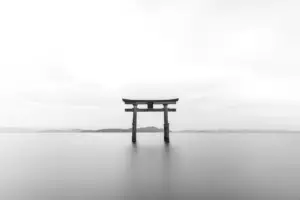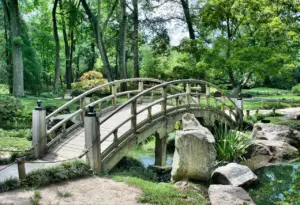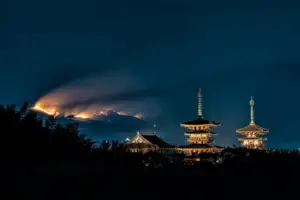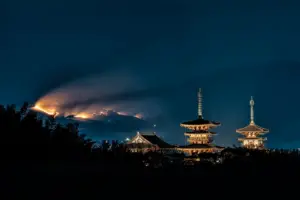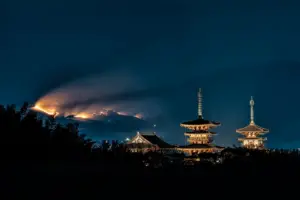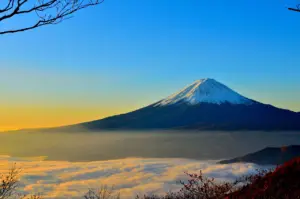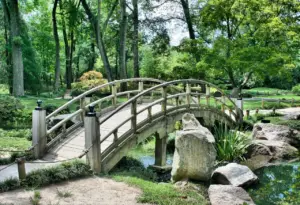If you are interested in exploring the rich religious history of Japan, there are many temples that are worth a visit. Japan has a long and profound history of Buddhism and Shintoism, and the temples in the country reflect this deep connection to spirituality.
Whether you are looking to discover the ancient roots of the country or you simply want to experience the peaceful atmosphere of these sacred sites, there are plenty of temples in Japan that will capture your attention.
This article will introduce you to 10 of the most fascinating temples in Japan, each with its own unique story and place in Japanese history. From the massive Buddha statue at the Todai-ji Temple to the serene rock garden at the Ryoan-ji Temple, these temples offer a glimpse into the spiritual traditions that have shaped Japan throughout the centuries.
So, if you are ready to embark on a journey through Japan’s rich religious past, read on to discover some of the country’s most impressive temples.
Key Takeaways
- Japan has a rich religious history that can be seen in its many temples, which are mainly Buddhist and Shinto.
- Some of the oldest and most significant temples include Todai-ji Temple in Nara, Senso-ji Temple in Tokyo, and Kiyomizu-dera Temple in Kyoto.
- Many of these temples are UNESCO World Heritage Sites, such as Horyu-ji Temple in Nara and Itsukushima Shrine in Hiroshima.
- Asakusa Shrine is famous for its Sanja Festival in May and is said to have the power to grant wishes related to love and relationships.
Todai-ji Temple in Nara
Step inside Todai-ji Temple in Nara and you’ll feel the weight of centuries of religious history, it’s a must-visit site!
This temple, founded in 728, is one of the oldest and largest in Japan. It is home to the world’s largest bronze statue of the Buddha.
The temple complex comprises several buildings, including the Daibutsuden (Great Buddha Hall), which houses the statue, and the Nigatsu-do Hall, which is famous for its lantern festival.
The Great Buddha Hall is an awe-inspiring structure, measuring 57 meters long and 50 meters wide. The statue of the Buddha, known as Daibutsu, stands at the center, towering over visitors at a height of 15 meters.
The statue was cast in 749 and took three years to complete. The hall itself is a marvel of engineering, with its massive wooden columns and beams held together without the use of nails.
It’s no wonder that the Great Buddha Hall has been designated a National Treasure of Japan.
Senso-ji Temple in Tokyo
As you explore Tokyo, you must visit the Senso-ji Temple. It’s the oldest Buddhist temple in the city with a rich religious history dating back to the 7th century. The temple’s significance lies in its role as a symbol of rebirth and hope for the Japanese people, particularly after World War II.
The Nakamise-dori Shopping Street leading up to the temple is a bustling market filled with traditional Japanese goods and souvenirs. It provides a unique cultural experience for visitors.
Oldest Buddhist Temple in Tokyo
Believe it or not, the oldest Buddhist temple in Tokyo, Sensoji Temple, dates all the way back to the 7th century. However, it’s not the only ancient temple in the bustling capital of Japan.
Just a stone’s throw away from Sensoji Temple is the Asakusa Shrine, also known as Sanja-sama. It was built in the 17th century and is dedicated to the three men who founded Sensoji Temple.
Asakusa Shrine is a must-visit for anyone interested in Japanese history and culture. It’s said to have the power to grant wishes related to love and relationships and is often visited by young couples seeking its blessing. The shrine is also famous for its Sanja Festival, which takes place every May and attracts millions of visitors from all over Japan and around the world.
With its rich history and cultural significance, Asakusa Shrine is a testament to the enduring power of religion and tradition in modern-day Tokyo.
History and Significance of the Temple
The enduring significance of Asakusa Shrine in Tokyo lies in its cultural and spiritual contributions to the city, attracting millions of visitors every year.
Originally built in the 7th century, the temple has been destroyed and rebuilt multiple times throughout its history.
During the Edo period, it became a popular destination for pilgrims and travelers, and its surrounding area developed into a bustling entertainment district.
The temple’s main hall, called the Hondo, houses the Kannon statue, a sacred object believed to have healing powers.
Visitors flock to the temple to make offerings and pray for good fortune, health, and success in their endeavors.
The temple is also home to numerous festivals throughout the year, including the Sanja Matsuri, one of Tokyo’s three major festivals.
Asakusa Shrine’s rich history and cultural significance make it a must-visit destination for those interested in exploring Japan’s religious heritage.
Nakamise-dori Shopping Street
Walking down Nakamise-dori Shopping Street feels like stepping back in time. The vibrant storefronts and colorful decorations transport you to a bustling Edo-period market. This shopping street, which leads up to the Senso-ji temple, is the oldest shopping street in Japan and has been a vital part of the temple’s history for centuries.
As you walk through the street, you can’t help but marvel at the sheer variety of shops and their unique offerings. Here are three things you should keep an eye out for:
-
Omamori: These are Japanese amulets or charms that are believed to bring good luck and ward off evil spirits. You can find them in various sizes and designs, from cute and colorful to solemn and traditional.
-
Ningyo-yaki: These are small, cake-like pastries shaped like dolls or animals. They are a popular snack in Japan and are often given as souvenirs. The ones sold in Nakamise-dori are freshly made and come in a variety of flavors, including green tea and custard.
-
Yomogi-mochi: These are soft, chewy rice cakes filled with sweet red bean paste and wrapped in fragrant mugwort leaves. They are a traditional Japanese dessert and are said to have health benefits. The ones sold in Nakamise-dori are freshly made and have a unique, earthy flavor.
As you continue down the street, you’ll also see a variety of traditional Japanese clothing, snacks, and souvenirs. The vendors are friendly and welcoming, and you can feel the sense of community that has existed here for generations.
Walking down Nakamise-dori is truly a one-of-a-kind experience and is not to be missed when visiting the Senso-ji temple.
Kiyomizu-dera Temple in Kyoto
You’ll be awestruck by the stunning panoramic view of Kyoto from Kiyomizu-dera Temple. Located in eastern Kyoto, this historic temple is perched on a hillside, offering visitors breathtaking views of the city below. The temple’s name, which means "pure water temple,"is derived from the waterfall that flows within the complex. This waterfall is believed to have healing properties and is a popular spot for visitors to drink from the streams.
Kiyomizu-dera Temple was founded in 778 AD and has since undergone numerous renovations and restorations. The temple’s main hall, which is supported by massive wooden pillars, is one of the most impressive features of the complex. Additionally, the temple’s grounds are home to several smaller shrines, including the Jishu Shrine, which is dedicated to the god of love and matchmaking. Visitors can also explore the Otowa waterfall, where they can drink from one of three streams, each of which is believed to grant a specific wish. With its rich religious history and stunning views, Kiyomizu-dera Temple is a must-visit destination for anyone traveling to Kyoto.
| Column 1 | Column 2 | Column 3 | Column 4 |
|---|---|---|---|
| Name | Kiyomizu-dera Temple | ||
| Location | Eastern Kyoto | ||
| Year Founded | 778 AD | ||
| Notable Features | Main hall supported by massive wooden pillars, Jishu Shrine, Otowa waterfall with three streams believed to grant specific wishes |
This table provides a quick overview of the temple’s key details, including its location, year of establishment, and notable features. Additionally, it highlights some of the unique aspects of the temple, such as the Jishu Shrine and Otowa waterfall, which are sure to pique the interest of visitors. Whether you’re a history buff or simply looking for a stunning view of Kyoto, Kiyomizu-dera Temple is a must-see destination that is sure to leave a lasting impression.
Itsukushima Shrine in Hiroshima
When you arrive at Itsukushima Shrine in Hiroshima, you’ll be greeted by the iconic floating torii gate, standing tall in the sparkling waters of the Seto Inland Sea. This ancient Shinto shrine, also known as Miyajima, has been a site of pilgrimage and worship for over a thousand years.
The torii gate, believed to mark the boundary between the human and divine worlds, is the most recognizable feature of the shrine and has become an enduring symbol of Japan.
Beyond the gate, you’ll find a complex of buildings and structures that have been carefully preserved and reconstructed over the centuries. The main hall of the shrine, built in the 16th century, is designated as a National Treasure of Japan and features a stunning vermillion facade with intricate wooden carvings.
You’ll also find several smaller shrines and temples scattered throughout the grounds, each with its own unique history and significance.
With its breathtaking natural beauty and rich religious history, Itsukushima Shrine is a must-see destination for anyone traveling to Japan.
Byodo-in Temple in Uji
As you approach the Byodo-in Temple in Uji, you’ll be transported back in time to the Heian period, where you can immerse yourself in the elegant architecture and serene atmosphere of this UNESCO World Heritage Site.
The temple, originally built in 998 as a countryside villa for a powerful politician, was later converted into a Buddhist temple in 1052.
The main hall, known as the Phoenix Hall, is the centerpiece of the temple complex and is revered as one of the most beautiful buildings in Japan. The Phoenix Hall is a stunning example of the unique architectural style that emerged during the Heian period.
With its graceful curves and intricate details, the hall is a testament to the skill and creativity of the craftsmen who built it. Inside, you’ll find a statue of Amida Buddha, surrounded by 52 Bodhisattva statues and other religious symbols.
As you explore the temple grounds, you’ll also find other historic structures, including the Bell Tower and the Pagoda, which offer a glimpse into the rich religious history of Japan.
A visit to the Byodo-in Temple is a must for anyone interested in Japanese history and culture.
Horyu-ji Temple in Nara
As you delve into the subtopic of Horyu-ji Temple in Nara, you’ll discover one of the oldest wooden structures in the world.
This temple has a rich history and significance that dates back to the 7th century, serving as a major center for Buddhism in Japan.
Step foot into the temple complex and explore its treasures. You’ll find numerous sculptures and artifacts that have survived for centuries.
One of the Oldest Wooden Structures in the World
This temple’s claim to fame is that it houses one of the oldest wooden structures in the world, adding to its rich religious history.
The Horyu-ji Temple in Nara, Japan, boasts the oldest surviving wooden structure in the world, the main hall, which was built in the 7th century. The temple was founded by Prince Shotoku, who played a significant role in spreading Buddhism in Japan.
The temple complex comprises several buildings, including five-storied pagodas, lecture halls, and a museum that houses a collection of cultural artifacts.
The main hall of the Horyu-ji Temple is considered a masterpiece of Japanese architecture, with its elaborate wooden carvings, intricate roof tiles, and sliding doors adorned with paintings. The hall houses many important Buddhist statues, including a statue of Yakushi Nyorai, the Buddha of Healing, and a bronze statue of the Buddha Vairocana, which is considered one of the most important Buddhist statues in Japan.
The Horyu-ji Temple is not only a significant religious site but also a treasure trove of Japanese art and architecture that attracts visitors from all over the world.
History and Significance of the Temple
Now that you’ve learned about one of the oldest wooden structures in the world, let’s delve deeper into the history and significance of the temple.
This temple, known as Horyu-ji, is considered one of the most significant temples in Japan, not only for its age but also for its rich religious history.
Here are three important facts that highlight the importance of Horyu-ji:
-
Horyu-ji was founded in 607 AD by Prince Shotoku, who’s considered one of the most important figures in Japanese history.
-
The temple was designated as a UNESCO World Heritage Site in 1993, recognizing its cultural significance and historical value.
-
Horyu-ji houses countless cultural treasures, including sculptures, paintings, and artifacts that represent the evolution of Japanese art and culture over time.
The temple’s history is intertwined with the development of Buddhism in Japan and the country’s political history. As you explore the temple grounds, you’ll find a variety of buildings and structures that testify to this rich history, including the Five-Story Pagoda and the Kondo (Main Hall).
In addition, the temple is a testament to the resilience and perseverance of the Japanese people, who’ve managed to preserve this important cultural site for over 1,400 years.
Explore the Temple Complex and Its Treasures
Let’s take a closer look at the fascinating temple complex and discover the incredible treasures it holds. Many temples in Japan have a rich history, and their complex structures are an architectural marvel. Walking through the temple grounds is like stepping back in time, and the intricate details of the buildings are awe-inspiring.
As you explore the temple complex, you’ll find many treasures that showcase the religious and cultural significance of the temple. The statues of Buddha stand tall and majestic, exuding a sense of peace and serenity. The intricate carvings on the walls and pillars depict mythological stories and symbols that have been passed down through generations.
The ornate decorations on the roofs and facades are a testament to the skilled craftsmanship of the artisans who built them. Every corner of the temple complex is filled with a sense of wonder and reverence, and it’s truly a sight to behold.
Ryoan-ji Temple in Kyoto
You’ll be amazed by the simplicity and beauty of Ryoan-ji Temple’s rock garden in Kyoto. The garden consists of 15 rocks carefully placed on a bed of white gravel, with no vegetation in sight. The rocks are arranged in such a way that from any angle, one rock is always hidden from view. This design is said to represent the concept of infinity, as one can never see all 15 rocks at once.
Visitors are often drawn to the garden’s calming atmosphere, which is in line with Zen Buddhism’s focus on simplicity and mindfulness. In fact, the temple itself was originally built as a villa for a wealthy aristocrat in the 11th century before being converted into a Zen temple in the late 1400s. Today, Ryoan-ji Temple is a UNESCO World Heritage Site and a popular destination for those seeking a moment of serenity in the bustling city of Kyoto.
| Rock Placement | Interpretation |
|---|---|
| Three rocks in the top row | The Buddha, the Dharma, and the Sangha |
| Five rocks in the middle row | The five basic elements of the universe: earth, water, fire, air, and void |
| Seven rocks in the bottom row | The seven steps to enlightenment in Zen Buddhism |
The rock garden at Ryoan-ji Temple is not only a beautiful sight to behold but also a representation of deep philosophical concepts. Take a moment to contemplate the design and its meaning, and you may find yourself feeling a sense of peace and enlightenment.
Chion-in Temple in Kyoto
If you’re looking for a breathtaking experience in Kyoto, don’t miss out on visiting Chion-in Temple and its impressive main hall.
This temple holds a significant place in Japanese Buddhism as it is the head temple of the Jodo sect, which is one of the largest and most influential Buddhist sects in Japan.
The temple was founded in 1234 by Honen, a monk who revolutionized Buddhism in Japan by advocating the chanting of the name of Amida Buddha as the path to salvation.
The main hall of Chion-in Temple, known as the Miedo, is one of the largest wooden structures in Japan and is truly a sight to behold.
The hall was built in 1633 and features a giant wooden statue of Amida Buddha that stands at a height of 24.2 meters, making it the largest wooden statue in Japan.
The hall also houses many important artifacts and treasures, including the handwritten copy of the Honen Shonin Zenshu, a collection of Honen’s teachings, and the Jodo-e, a scroll that depicts the life of Amida Buddha.
Visiting Chion-in Temple is a must for anyone interested in Japanese Buddhism and its rich history.
Frequently Asked Questions
What is the significance of the architecture and design of the temples?
To understand the significance of the architecture and design of temples in Japan with rich religious history, it’s important to consider their cultural and historical context.
These temples are not just buildings, but sacred spaces that are believed to be imbued with spiritual power. The design of these temples reflects a deep reverence for nature, with many temples featuring gardens, ponds, and other natural elements. The use of wood and other natural materials also reflects a belief in the importance of sustainability and harmony with the natural world.
The intricate carvings, paintings, and other decorative elements found in these temples are not just ornamental, but are imbued with symbolic meaning. They reflect the teachings of Buddhism and other religions that have influenced Japanese culture over the centuries.
Overall, the architecture and design of these temples are a testament to the rich spiritual and cultural history of Japan. They serve as a reminder of the importance of living in harmony with the natural world.
Are there any specific rituals or customs that visitors should be aware of before entering the temples?
Before entering a temple in Japan, it’s important to be aware of the customs and rituals that are typically observed.
Visitors are expected to remove their shoes before entering the temple, as a sign of respect and cleanliness.
It’s also common to bow upon entering and leaving the temple, as a way of showing reverence to the deities or spirits that are believed to reside there.
In addition, visitors should avoid pointing with their fingers or feet, as this is considered impolite.
It’s also customary to make an offering at the altar, which may include coins, flowers, or incense.
Visitors should be mindful of the specific customs and practices of each temple, as they may vary depending on the location and the religious tradition that is observed.
Overall, observing these customs and rituals is an important way to show respect and appreciation for the rich religious history that is embodied by the temples of Japan.
What is the history behind the founding and development of each temple?
To understand the founding and development of each of the 10 temples in Japan with rich religious history, one must delve into the intricate and complex history of Japanese Buddhism.
Each temple has its own unique story, rooted in the early spread of Buddhism from China and Korea to Japan in the 6th century.
The founding of these temples was often tied to the patronage of powerful clans or rulers, who sought to legitimize their rule through the promotion of Buddhism.
Over time, these temples grew in size and influence, becoming centers of learning and scholarship, as well as pilgrimage sites for devotees seeking spiritual enlightenment.
Despite centuries of wars, natural disasters, and political upheaval, these temples have endured, serving as enduring symbols of Japanese culture and spirituality.
By exploring the history of each temple, visitors can gain a deeper appreciation for the rich religious heritage of Japan and the enduring power of Buddhism as a unifying force in Japanese society.
How have the temples been impacted by natural disasters or conflicts throughout history?
You’ve asked how the temples in Japan with rich religious history have been impacted by natural disasters or conflicts throughout history. It’s important to note that Japan is located in the Pacific Ring of Fire and is prone to earthquakes, typhoons, and tsunamis.
Many of the temples have been damaged or destroyed by natural disasters over the centuries. Additionally, Japan has a long history of warfare, and many temples have been targeted and damaged or destroyed during conflicts.
However, the Japanese people have a deep reverence for their religious and cultural heritage, and many temples have been rebuilt and restored multiple times over the centuries. In some cases, the restoration work has been so extensive that the temples are now recognized as UNESCO World Heritage sites.
Despite the challenges posed by natural disasters and conflicts, the temples in Japan with rich religious history continue to be important cultural and spiritual landmarks that attract visitors from around the world.
Are there any notable events or festivals that take place at the temples throughout the year?
If you’re interested in attending events or festivals at temples in Japan with rich religious history, there are several notable ones that take place throughout the year. One of the most popular is the Setsubun Festival, which happens in February and marks the beginning of spring. During this festival, people throw beans to ward off evil spirits and bring good luck.
Another popular festival is the Cherry Blossom Festival, which takes place in March and April and celebrates the blooming of the cherry blossoms. At temples such as the Kiyomizu-dera Temple in Kyoto, visitors can enjoy cherry blossom viewing parties and traditional Japanese performances.
Additionally, many temples also hold special events and ceremonies during New Year’s, such as the Hatsumode ceremony at the Senso-ji Temple in Tokyo, where visitors can pray for good fortune in the coming year.
Overall, attending these events and festivals can provide a unique and immersive experience of Japanese culture and religion.
Conclusion
Congratulations! You’ve just read about 10 temples in Japan with rich religious history. Each temple has its own unique story and cultural significance that has been preserved for centuries.
As you reflect on this journey, you realize that these temples offer a glimpse into the rich spiritual heritage of Japan. From the grandeur of Todai-ji Temple in Nara to the simplicity of Ryoan-ji Temple in Kyoto, each temple tells a story of its own.
They are a testament to the cultural and architectural prowess of Japan.
In conclusion, these temples aren’t just architectural marvels but a testament to Japan’s rich religious history and cultural heritage. They offer visitors a chance to experience the beauty and serenity of Japan’s spiritual world. So, if you ever visit Japan, make sure to visit at least one of these temples and immerse yourself in the rich cultural heritage of Japan.




































